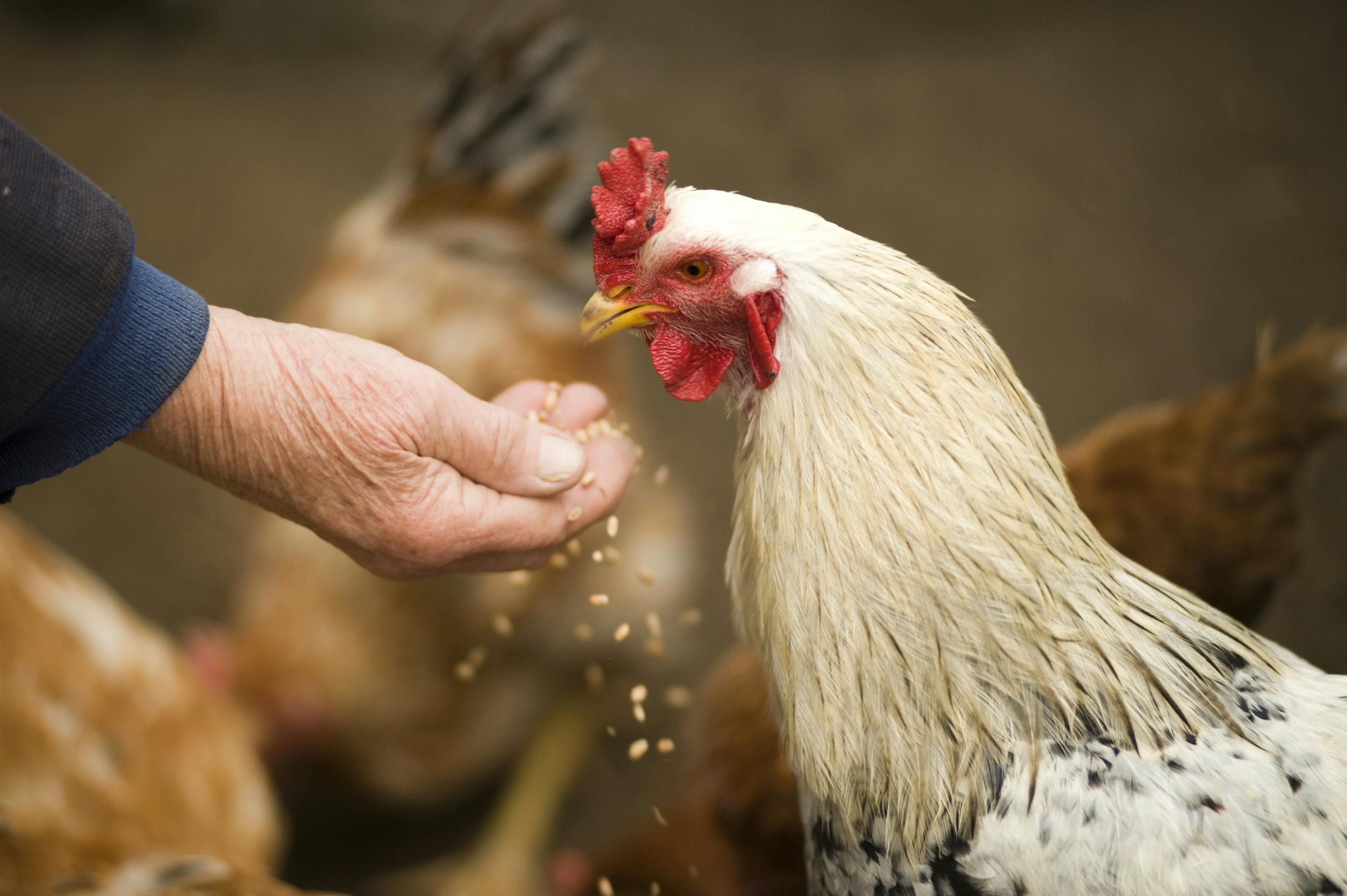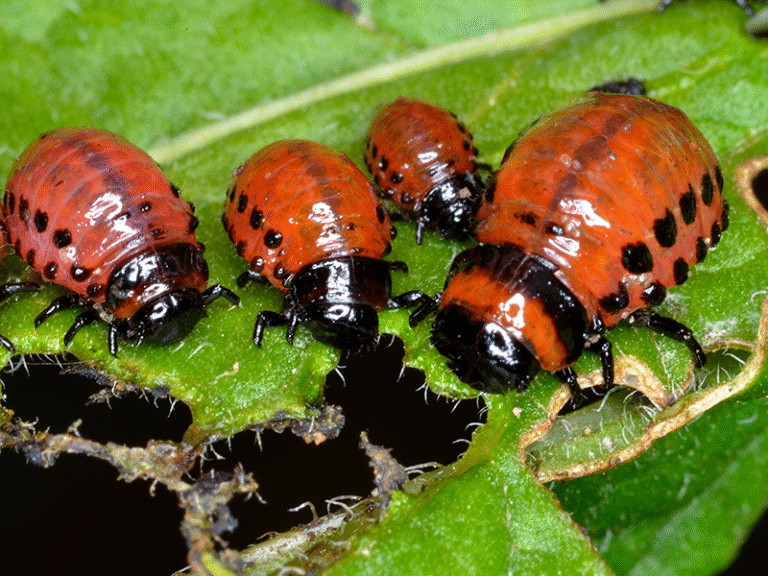New Study Shows Antimicrobial Peptides Can Protect Chickens from Salmonella Infections

A new scientific study from the University of Illinois Urbana-Champaign has revealed that antimicrobial peptides (AMPs)—tiny chains of amino acids—can successfully control Salmonella infections in chickens. This finding could mark an important step toward improving food safety and reducing the poultry industry’s reliance on antibiotics.
The research, led by Professor Gireesh Rajashekara from the College of Veterinary Medicine’s Department of Pathobiology, was published in Microbiology Spectrum (2025). It shows that certain AMPs not only killed Salmonella in laboratory tests but also reduced Salmonella colonization in live chickens without harming beneficial gut microbes.
Understanding the Salmonella Problem
Salmonella is one of the most common causes of foodborne illness worldwide. In the United States alone, it is responsible for about 1.35 million infections, 26,500 hospitalizations, and roughly 420 deaths each year. The Centers for Disease Control and Prevention (CDC) estimates the annual economic burden to be around $3.7 billion in healthcare costs and lost productivity.
Chickens and their products—such as eggs and meat—are major carriers of Salmonella. Because the bacteria can live harmlessly inside chickens, infected birds often show no symptoms while spreading it through feces, leading to contamination of meat and eggs.
To control bacterial infections and promote growth, the poultry industry has traditionally relied on antibiotics. However, the overuse of antibiotics has led to the rise of antimicrobial resistance (AMR), a global threat that makes infections harder to treat. This has sparked an urgent search for non-antibiotic alternatives, which is where antimicrobial peptides come into play.
What Are Antimicrobial Peptides?
Antimicrobial peptides (AMPs) are short sequences of amino acids naturally produced by many organisms, including humans, animals, and even bacteria. They act as part of the innate immune system, helping to destroy invading microbes by breaking down their cell membranes or disrupting vital cellular processes.
Unlike traditional antibiotics, AMPs tend to kill bacteria quickly and broadly, targeting the outer structure of bacterial cells, which makes it difficult for bacteria to develop resistance. Many AMPs are also effective against viruses, fungi, and parasites, and they’re considered safer for use in animals and humans.
In this new study, the researchers focused on AMPs derived from the probiotic bacterium Lactobacillus rhamnosus GG (LGG), which is already well known for its health benefits in both humans and animals.
The Details of the Study
The scientists screened several LGG-derived peptides to identify those that were most effective against multiple strains of Salmonella enterica, including S. Typhimurium and S. Enteritidis, two major culprits in foodborne outbreaks.
They identified three promising peptides—P1 (NPSRQERR), P2 (PDENK), and P4 (MLNERVK). Laboratory tests showed these peptides could kill a wide range of Salmonella serovars, as well as other harmful bacteria such as E. coli.
But the real breakthrough came from live animal testing. When chickens infected with Salmonella were treated with these peptides, P1 and P2 significantly reduced the bacterial load in the intestines. Specifically, P1 reduced Salmonella colonization by 2.2 logs, while P2 achieved a reduction of 1.8 logs at seven days post-infection.
The researchers also examined the gut microbiome of the treated chickens and found that the AMPs did not disrupt the diversity or balance of beneficial gut bacteria, which is a major advantage compared to many antibiotics that often disturb normal gut flora.
Stability and Industry Readiness
For any antimicrobial product to be practical in the poultry industry, it must be able to survive harsh conditions, including heat during feed processing and digestion in the bird’s gastrointestinal tract.
Encouragingly, these peptides retained their antibacterial activity after exposure to heat and protease enzymes, making them suitable for incorporation into feed or water. This kind of resilience is critical for real-world applications where stability determines whether the product can be used on a commercial scale.
How the Peptides Work
The researchers believe the AMPs work by disrupting the cell membranes of Salmonella bacteria. This action causes the bacterial cells to lose their structural integrity and eventually die.
Unlike antibiotics that target specific biochemical pathways—where mutations can lead to resistance—AMPs attack fundamental structures shared by many bacteria. This gives them a broader spectrum of activity and a lower chance of resistance developing over time.
Why This Matters for Food Safety and Antibiotic Resistance
Reducing Salmonella in chickens directly translates to safer poultry products for consumers. Since most Salmonella infections in humans come from contaminated meat and eggs, lowering bacterial levels at the farm stage could significantly decrease the number of foodborne illness cases.
Furthermore, the success of these peptides could help reduce antibiotic use in livestock farming, which in turn may slow the spread of antibiotic resistance genes in the environment. It’s a win-win for both animal health and public health.
What Comes Next
While the findings are promising, the researchers emphasize that this is still early-stage work. The study was conducted on a limited scale, and more research is needed to determine the optimal doses, delivery methods, and long-term effects of AMPs in commercial poultry systems.
Future studies will likely involve larger flocks, extended monitoring periods, and testing under real farm conditions. The team also plans to explore additional peptides with similar or improved antibacterial activity and to fine-tune how they can be efficiently delivered through feed or water systems.
There’s also a need to understand the molecular mechanism of these peptides in greater detail—how exactly they interact with bacterial membranes and whether bacteria could eventually adapt to resist them.
Broader Use of Antimicrobial Peptides
Beyond poultry, AMPs are being explored in many areas of medicine and agriculture. They’re being studied for potential use in human wound treatments, oral care products, fish farming, and even as natural preservatives in food packaging.
Several AMPs are currently in different stages of clinical trials for human medicine, targeting drug-resistant bacteria like MRSA (Methicillin-Resistant Staphylococcus aureus). Their versatility and relative safety make them an attractive field of study across disciplines.
However, producing AMPs at a large scale remains expensive, and ensuring their stability and safety under real-world conditions is still a challenge. Advances in synthetic biology and peptide engineering are gradually reducing costs and improving production efficiency, which could make AMPs more accessible for agricultural use in the near future.
The Takeaway
This study adds to growing evidence that antimicrobial peptides could serve as powerful alternatives to antibiotics in animal agriculture. By killing harmful bacteria like Salmonella without disrupting gut health or promoting resistance, AMPs could help shape a new era of sustainable food production.
If scaled up successfully, these peptides could make chicken farming safer, reduce antibiotic dependence, and protect consumers from foodborne pathogens—all while helping preserve the effectiveness of antibiotics for human medicine.
Research Reference:
Microbiology Spectrum (2025). Antimicrobial Peptides from Lactobacillus rhamnosus GG Inhibit and Reduce Salmonella Colonization in Chickens.
https://doi.org/10.1128/spectrum.01848-25





